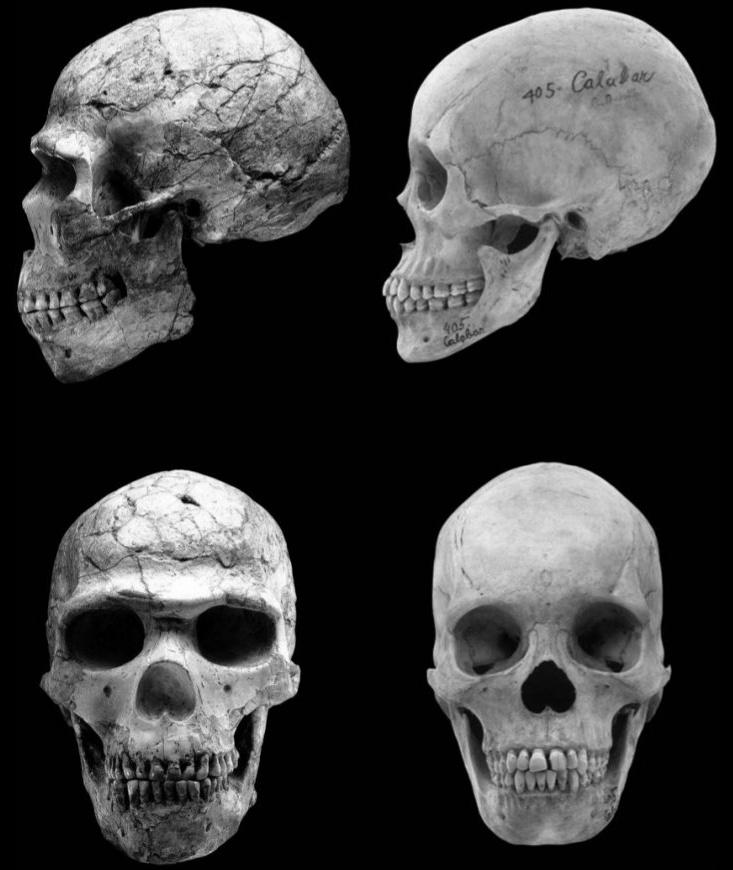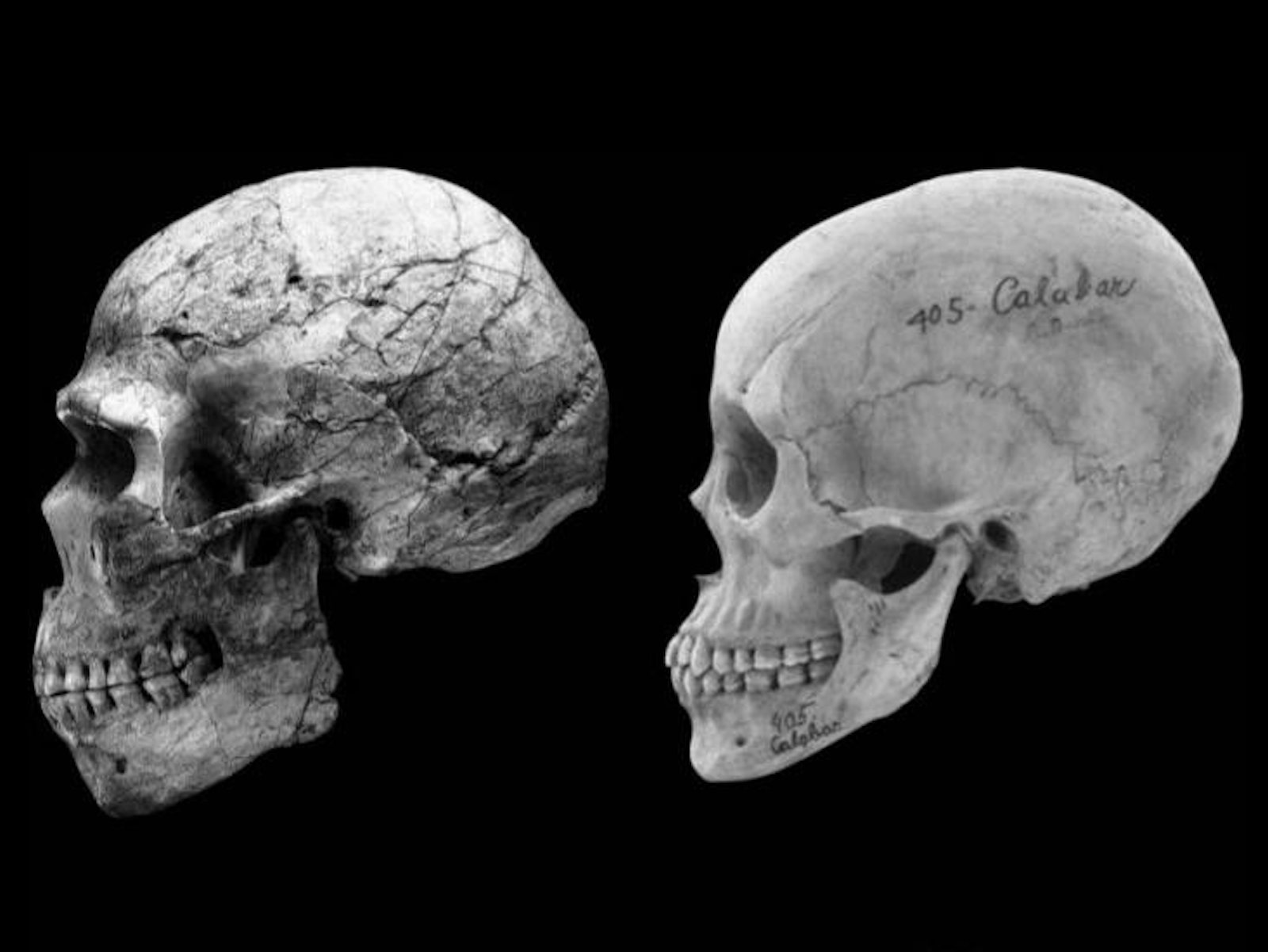
In Earth’s not-so-distant fossil record of human ancestors, an important change appears around 200,000 years ago. Compared with earlier specimens, these skeletons are relatively fine-boned, with big skulls, delicate jaws, and flat, vertical foreheads. Such remnants are thought to depict a time in history when the human became modern—anatomically comparable to you and me today.
Atop these iconic fossils lies a more recent layer of Earth full of artifacts created by a modern sapien. The fossil record here, about 50,000 years old, represents a massive surge of culture: tools crafted from animal bone and antler, rather than simple stone ones from earlier eras, and evidence that people were applying pigment and jewelry to their bodies, creating intricate burial sites and painting on the cave walls. “It’s not that we were inventing tools,” says University of Utah doctoral candidate Robert Cieri, “it’s that we were inventing much more complex tools that look like they were made by a person thinking the way we think today.”
These fossils suggest humans were anatomically modern for 150,000 years before launching what’s been called this “creative revolution” of sophisticated art and tool-making. What took us so long to get culturally sophisticated, and why did it seem to happen relatively suddenly around 50,000 years ago?
Though the answer is the subject of continual dispute, the revolution’s start is often associated with a rise in population size and a heightened ability to share creative and useful thoughts—the two minds are better than one idea. Building upon this growing-population hypothesis, a study in Current Anthropology last year (pdf) proposes that the creative boom is also the result of a more cooperative, pleasant, human. “You really can’t learn from somebody if you don’t get along with them,” says Cieri, the study’s lead author, who completed the work under Duke anthropologist Steven Churchill. So “if you want to be able to teach and work together, to be able to learn, you have to be tolerant.” (See Kat McGowan’s earlier Nautilus feature about why cooperation may be what makes humans special in other ways.)
Cieri’s logic comes from comparing human skulls older than 50,000 years all the way up to those belonging to 20th century hunter-gatherers and agriculturists. Though 200,000-year-old skeletons look similar to ours, they’re not exactly the same: Over time there has been a reduction in the brow ridge and a shortening of the upper face, says Cieri, adding that in people today, these changes reflect less testosterone in the body. “I think it’s a reasonable interpretation of the data to say that testosterone levels fell during this time period,” resulting in the newly slimmed skull that humans have maintained to this day.
Along with the physical changes, lowered testosterone is also associated with a less aggressive disposition. For instance, a 2011 study found that new fathers have considerably lower levels of the hormone compared to men without children, a necessary physiological change in a full-grown man suddenly responsible for a defenseless, and sometimes infuriating, infant.
Given that males have more testosterone than females to begin with, primatologist Richard Wrangham expects that if sex difference could be measured in the ancient people in the current study, there would be a greater reduction of testosterone in males than in females. Leading up to the creative revolution, as people began to experience lower levels of the aggressive hormone, and males and females became more hormonally similar, daily interactions would have resulted in shared ideas and art, rather than the hostility more common in earlier eras.
As with so many of humanity’s origin stories, the new finding unearths competing perspectives. According to paleoanthropologist Richard Klein, Cieri’s theory would require that the human population have grown substantially between 200,000 and 50,000 years ago (the span between when modern humans appeared to the time of the creative burst) and Klein says that his own research in South Africa reveals no such evidence of population growth.
But this conflicting evidence may be scattered pieces of the same great historical puzzle, says Cieri. Rather than the global human population increasing at once, “you could have [small] populations experiencing higher population density, lower testosterone levels, and modernization, all before the overall [global] population does,” he says. Like in “some river valley where people were able to live in higher densities,” perhaps they learned to work together and produce advanced art before cooperative creativity spread worldwide.
All speculation aside, the study’s optimistic sway may have potential to influence our current-day human interactions. “People always consider humans to be the smartest species and think that’s why we have worldwide success,” says Cieri. “But maybe, [to be successful] it’s more important for all people to get along rather then to get the smartest people together.” But don’t throw brains out the window too quickly. After all, cooperative intelligence is successful, Cieri says, laughing, only “as long as everyone in the group is smart enough, I suppose.”
Becca Cudmore is an editorial intern at Nautilus.




























